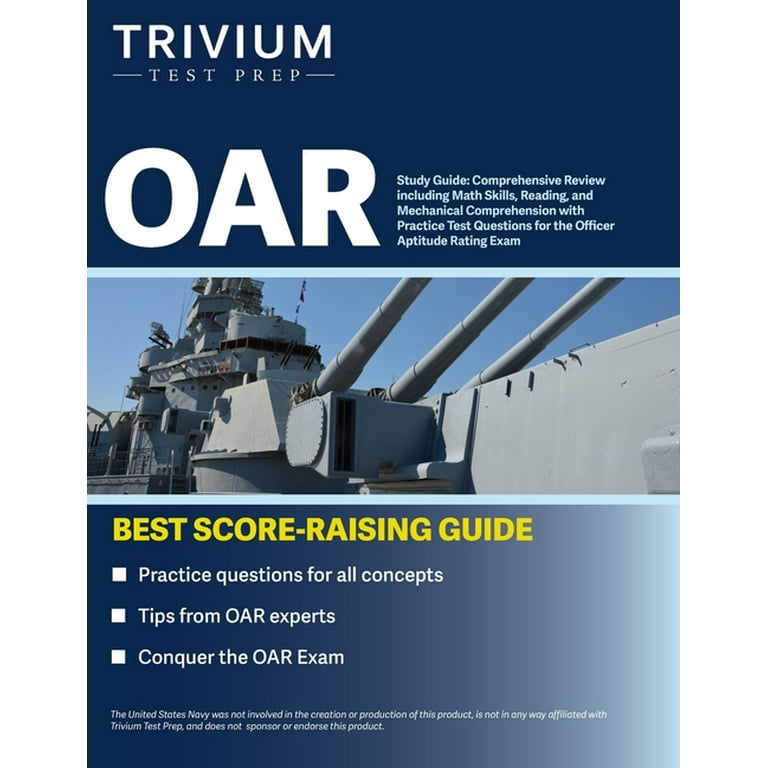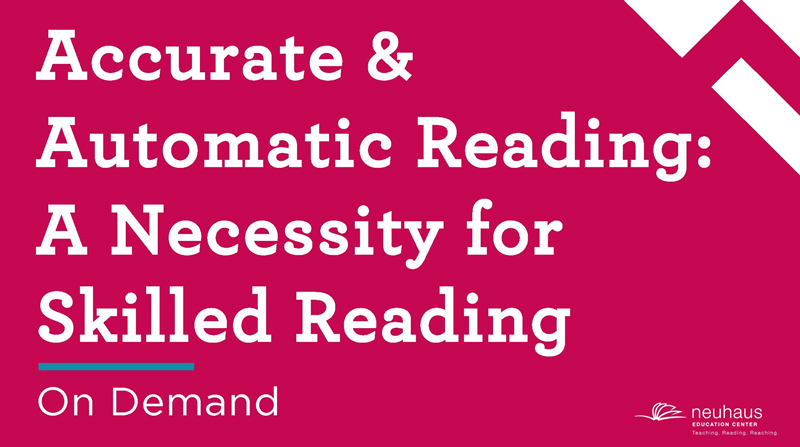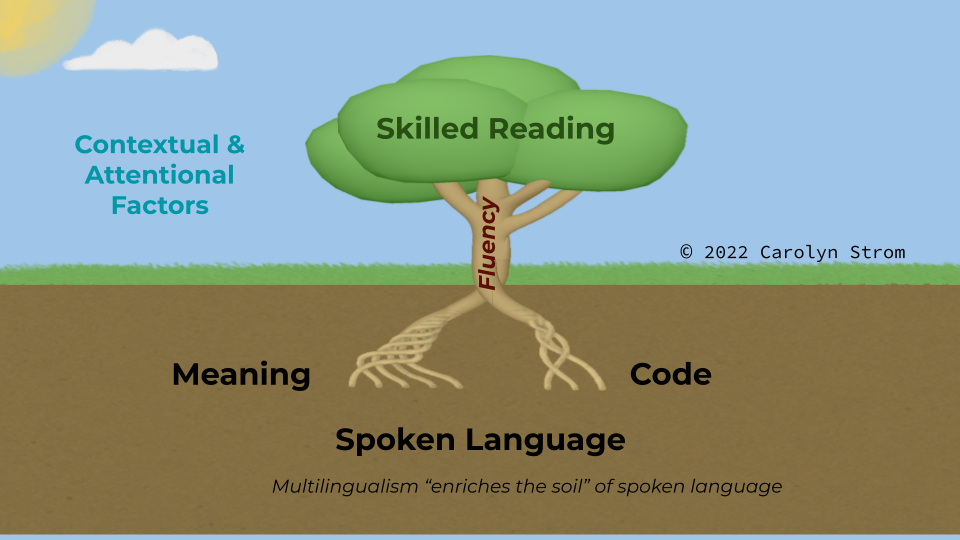What is Skilled Reading the Product Of?
Skilled reading is the product of a combination of cognitive processes, including phonemic awareness, decoding, fluency, and comprehension. These processes work together to allow a reader to accurately and efficiently understand written text.
Skilled reading also involves the ability to make connections between prior knowledge and the information presented in the text, as well as the capacity to use various reading strategies to enhance understanding. It is through the integration of these cognitive processes that an individual develops the ability to read with proficiency and comprehension, enabling them to engage with and interpret a wide range of written material.
As such, skilled reading is not simply the result of one isolated skill but rather the culmination of various interconnected abilities that contribute to fluent and effective reading.
The Components Of Skilled Reading
Understanding the components of skilled reading is crucial for developing effective reading instruction. Skilled reading is not solely the result of decoding words on a page, but rather a combination of various elements that culminate in a reader’s ability to comprehend and interpret text accurately. Each component of skilled reading plays a vital role in the development of reading proficiency. Let’s delve into the core components of skilled reading, exploring how each contributes to the overall reading experience.
Phonemic Awareness
Phonemic awareness refers to the ability to identify and manipulate individual sounds in spoken words. It involves recognizing and working with phonemes, the smallest units of sound in a language. Developing phonemic awareness enables readers to understand the relationship between spoken and written language, laying the foundation for proficient reading.
Phonics
Phonics involves the connection between letters and their associated sounds. It is the understanding that there is a predictable relationship between phonemes and graphemes, which allows readers to decode and comprehend written words. Proficiency in phonics is essential for developing accurate and fluent reading skills.
Vocabulary
Vocabulary encompasses the words that a person understands and uses. A rich and diverse vocabulary is fundamental for comprehending written text. Readers with an extensive vocabulary are better equipped to grasp the meaning of the text, enabling deeper comprehension and interpretation.
Fluency
Fluency refers to the ability to read with speed, accuracy, and proper expression. It involves the effortless recognition of words and the ability to convey the meaning of the text through appropriate phrasing and intonation. Developing fluency enhances the overall reading experience by promoting smoother and more natural reading.
Comprehension
Comprehension is the ultimate goal of skilled reading. It involves the ability to understand, analyze, and interpret written text. Proficient readers comprehend the meaning of the text, make connections, draw inferences, and critically evaluate the content. Effective comprehension strategies are paramount for proficient reading.

Credit: www.walmart.com
The Role Of Phonemic Awareness
Understanding Phonemes
Understanding phonemes is the foundation of skilled reading. Phonemes are the individual sounds, the smallest units of sound that make up words. They are crucial in learning how to read and spell. Children with strong phonemic awareness can recognize, manipulate, and distinguish these sounds.
Blending And Segmenting
Blending involves combining individual phonemes together to form a word, while segmenting is the process of breaking a word into its individual phonemes. These skills help children decode words, enhance oral language, and develop their spelling abilities.
Developing Phonemic Awareness
Developing phonemic awareness involves activities such as rhyming, identifying initial and ending sounds, and manipulating sounds within words. These exercises help children become proficient readers by improving their ability to decode and comprehend written language.
The Importance Of Phonics Instruction
Skilled reading is the outcome of effective phonics instruction. By teaching children the relationship between sounds and letters, phonics provides a strong foundation for reading and enhances comprehension skills.
Phonics instruction plays a crucial role in developing skilled reading abilities in children. It focuses on teaching the letter-sound correspondence, decoding and encoding skills, and sight words, all of which are essential components for effective reading. By understanding phonics, children can decode words and recognize sound patterns, enabling them to read with fluency, accuracy, and comprehension. Let’s explore each of these aspects in detail.
Letter-sound Correspondence
Letter-sound correspondence refers to the relationship between letters and the sounds they represent. It forms the foundation of phonics instruction, helping children understand how to associate letters or letter combinations with specific sounds. For example, they learn that the letter ‘b’ corresponds to the /b/ sound and ‘sh’ corresponds to the /sh/ sound. By mastering these correspondences, children can identify and pronounce unfamiliar words correctly, enhancing their reading skills.
Decoding And Encoding
Decoding and encoding are essential skills that allow children to both read and write words. Decoding involves using letter-sound correspondences to sound out words and recognize their meanings. It allows children to break down unfamiliar words into manageable units and comprehend their individual sounds. Encoding, on the other hand, involves using letter-sound knowledge to spell words accurately. By mastering both decoding and encoding skills, children become proficient readers and writers, enhancing their overall literacy abilities.
Sight Words
Sight words, also known as high-frequency words, are words that appear frequently in written texts and do not necessarily follow regular phonics patterns. Examples of sight words include “the,” “and,” “said,” and “was.” These words cannot be easily sounded out and require memorization for instant recognition. Phonics instruction incorporates sight words to ensure children develop a robust reading vocabulary. By recognizing sight words effortlessly, children can read fluently and focus on comprehension, improving their overall reading proficiency.
Building Vocabulary Skills
HTML Syntax Content:When it comes to skilled reading, one of the key factors that contribute to comprehension is having a strong vocabulary. Word knowledge plays a crucial role in understanding texts and extracting meaning from them. In this section, we will explore the different aspects of building vocabulary skills, including word meaning and context, word learning strategies, and developing a rich vocabulary.
Word Meaning And Context
Understanding the meaning of words is essential for fluent reading. When encountering unfamiliar words, skilled readers are able to draw meaning from the context in which the words appear. This context can include the surrounding words, the overall topic of the text, and the reader’s background knowledge. By using context clues, such as synonyms, antonyms, or explanations provided by the author, readers can infer the meaning of unknown words.
A strong grasp of word meaning allows readers to make connections between new vocabulary and what they already know. For example, let’s say a reader comes across the word “inquisitive” in a sentence like, “The little girl had an inquisitive nature, always asking questions and seeking answers.” Even if the reader is unfamiliar with the word, they can understand its meaning based on the context clues. They may associate “inquisitive” with curiosity and a desire for knowledge, helping them comprehend the sentence.
Word Learning Strategies
Skilled readers utilize various strategies to improve their word learning abilities. One effective strategy is the use of word analysis, which involves breaking down unfamiliar words into smaller parts to establish their meaning. By recognizing prefixes, suffixes, and root words, readers can make educated guesses about the word’s definition.
Another useful strategy is using word reference materials such as dictionaries or online resources. These tools provide definitions, pronunciation guides, and examples of word usage. By actively seeking out the meanings of new words, readers expand their vocabulary and enhance their reading comprehension skills.
Additionally, using vocabulary in context aids in retention and understanding. When encountering new words in texts, readers should try to use them in their own speaking and writing. This practice helps solidify word meanings and promotes effective language usage.
Developing A Rich Vocabulary
Building a rich vocabulary requires consistent effort and exposure to a wide range of words. Reading extensively across different genres and topics exposes readers to diverse vocabulary. Additionally, engaging in conversations, discussions, and debates promotes the use and understanding of various words.
Word games and puzzles can also be an enjoyable method for enhancing vocabulary skills. Crossword puzzles, word searches, and vocabulary quizzes challenge readers to recall and apply their word knowledge. These activities help reinforce memorization and reinforce word meanings.
In conclusion, skilled reading is strongly influenced by vocabulary skills. By understanding word meaning and context, employing effective word learning strategies, and actively developing a rich vocabulary, readers can improve their comprehension and overall reading ability.
Developing Reading Fluency
Developing reading fluency is a crucial aspect of becoming a skilled reader. It involves the ability to read with speed, accuracy, expression, and comprehension. Skilled readers are able to read smoothly and effortlessly, making it easier for them to understand and retain what they read. Achieving reading fluency is the product of various key elements, which we will explore in this article.
Automaticity And Accuracy
Automaticity refers to the ability to recognize words quickly, effortlessly, and without conscious effort. It is the result of repeated exposure to vocabulary, allowing readers to instantly identify words and their meanings. When readers achieve automaticity, their reading becomes more efficient, freeing up cognitive resources for comprehension and higher-level thinking.
Accuracy is another essential component of reading fluency. Skilled readers are able to read words accurately, preventing comprehension breakdowns due to misreading or misunderstanding words. Accuracy is developed through practice, explicit instruction, and phonics awareness, improving reading fluency and overall understanding.
Expression And Prosody
Expression refers to the ability to read with appropriate intonation, tone, and emotion. Skilled readers use expression to convey the meaning and intention of the text. By reading expressively, they enhance the overall comprehension and engagement of the reader.
Prosody encompasses the rhythmic and melodic aspects of reading. It involves varying reading rate, pausing at appropriate punctuation, and emphasizing important words and phrases. Skilled readers with strong prosodic skills demonstrate a natural flow and smoothness in their reading, which contributes to improved comprehension and enjoyment of the text.
Reading Rate
Reading rate refers to the speed at which an individual reads. Skilled readers have a comfortable reading rate that allows them to maintain comprehension and engagement. It is important to note that reading rate is not solely about reading quickly; it is about finding a balance between speed and understanding. By practicing and gradually increasing reading rate, readers can improve their overall reading fluency.
In conclusion, developing reading fluency is the product of various elements such as automaticity, accuracy, expression, prosody, and reading rate. These factors work together to create skilled readers who can read smoothly, accurately, and with comprehension. By focusing on developing these key elements, individuals can enhance their reading fluency and become more proficient readers.

Credit: neuhausestore.org

Credit: www.attainmentcompany.com
Frequently Asked Questions Of What Is Skilled Reading The Product Of?
What Leads To Skilled Reading?
Skilled reading is developed through phonemic awareness, vocabulary knowledge, and comprehension abilities. Additionally, exposure to a print-rich environment and practice with reading materials plays a crucial role in developing proficient reading skills. Regular reading, comprehension strategies, and explicit instruction also contribute to enhancing reading proficiency.
What Is Proficient Reading A Product Of?
Proficient reading is a product of strong comprehension skills and fluency. It involves understanding and interpreting written content with ease and accuracy.
What Skill Does Reading Come Under?
Reading is a valuable skill that falls under the category of language proficiency. It helps in expanding vocabulary, improving comprehension, and enhancing critical thinking abilities.
Conclusion
The achievement of skilled reading is a result of multiple factors working together harmoniously. It involves a combination of decoding skills, fluency, comprehension, and vocabulary knowledge. Practice, motivation, and effective teaching techniques play crucial roles in developing skilled reading abilities.
By understanding the interplay of these components, educators can better support students in becoming proficient readers. With targeted interventions and a supportive learning environment, every learner can unlock the power of skilled reading and open the door to a world of knowledge and opportunities.


